The Job Benchmarking Process
If a job could talk, it would tell us exactly what sort of person it required for superior performance. Because jobs can’t talk, we've had to find other ways to work out what's important. The hard skills for a job are fairly easy to determine: things like level of education, experience and technical skills.
What is sometimes harder to determine is what “type of person” would be most successful — one that would fit the role as well as the organisational culture.
What is Job Benchmarking?
The job benchmarking process identifies the traits and qualities that an ideal candidate needs in order to be successful in a particular position.
How Does the Process Work?
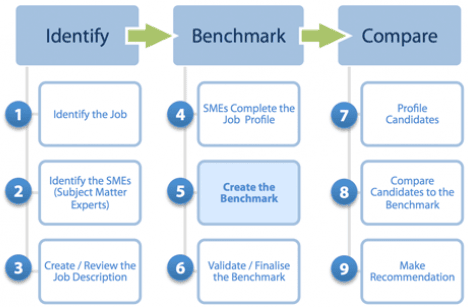
Could You Give Me an Example?
What follows is an explanation of how benchmarking works with the TriMetrix System using a real benchmarking example of a Business Development Manager (BDM) for a prominent women's retail fashion label.
Identify the Specific Job to be Benchmarked - We begin with the job
To start, we would already have some idea about the kinds of traits that a successful candidate would need to have, but we're not completely sure which ones — or the level of importance of each trait.
Benchmarking is used to identify the most important traits (e.g., the top 7 personal skills, the top 3 motivators, the top 3 behaviours) and define the required score in each.
- Job Example: Business Development Manager (BDM).
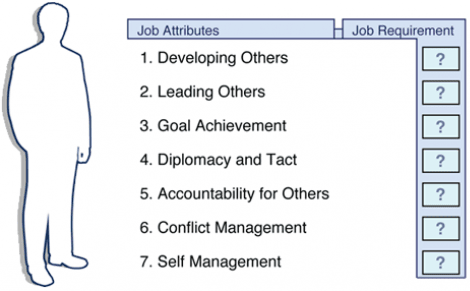
Identify the Subject Matter Experts (SMEs)
SMEs are the people that have a clear understanding of what the job is and what is involved in superior performance within that role.
- Number: 5-7 SMEs.
- Example: 1x CEO, 1x HR Manager, 1x National Retail Manager, 4x Business Development Managers.
SMEs Review / Create the Job Description
Creating a benchmark can take between 3 hours and a whole day, face-to-face with the SMEs and the hiring manager. The first step is to create (or review) the job description for the position with the hiring manager and SME group. There are 3 key components to every job description:
- Duties: Create a list of all the activities/tasks involved in the job. (e.g., "Maintaining database records, meeting sales targets, meeting store visual presentation standards.")
- Key Result Areas (KRAs): Group the list of duties together that are similar, then give them a title. (e.g., “Sales Management, Customer Service, Store Presentation.”)
- Key Performance Indicators (KPIs): A specific and measurable statement for each KRA. (e.g., "Achieving sales target of 50 widgets per month.") You can have multiple KPIs for each KRA.
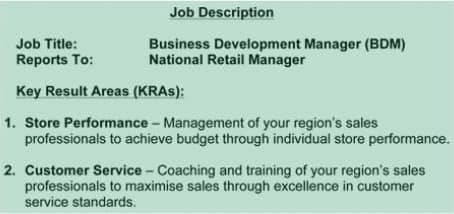
SMEs Complete the Job Profile - Each SME completes the Job Questionnaire
It is important to remind the SMEs to keep in mind the KRAs of the role as they complete the questionnaire.
- Profile: “TriMetrix® - Job”.
- Time: 30-45 Minutes.

Create the Benchmark
The administrator produces the benchmark by combining the SME's responses together to produce a new report.
- Profile: "TriMetrix® - Multiple Respondent Job".
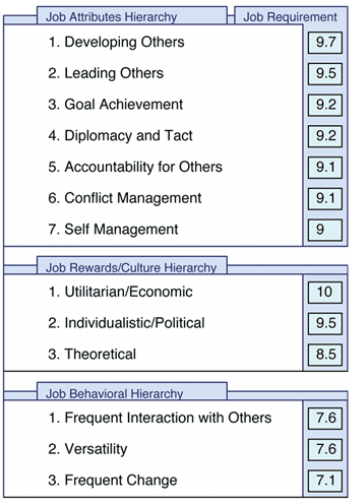
Validate the Benchmark
Once the benchmark has been produced, it must be reviewed and validated to ensure that it is accurate. This can be done by the following:
- Compare high performers’ profiles to the benchmark.
- Compare low performers’ profiles to the benchmark.
- Debrief results with SME group.
- Refine the benchmark if needed.
Profile the Candidates
After the benchmark has been finalised, it's time to start profiling candidates.
- Profile: "TriMetrix® - Talent Report".
- Time: 30-45 Minutes.
Compare Candidates to the Benchmark
You can have multiple candidates' results compared to the benchmark in a single report.
- Profile: "TriMetrix® - Job Plus/Talent Comparison".
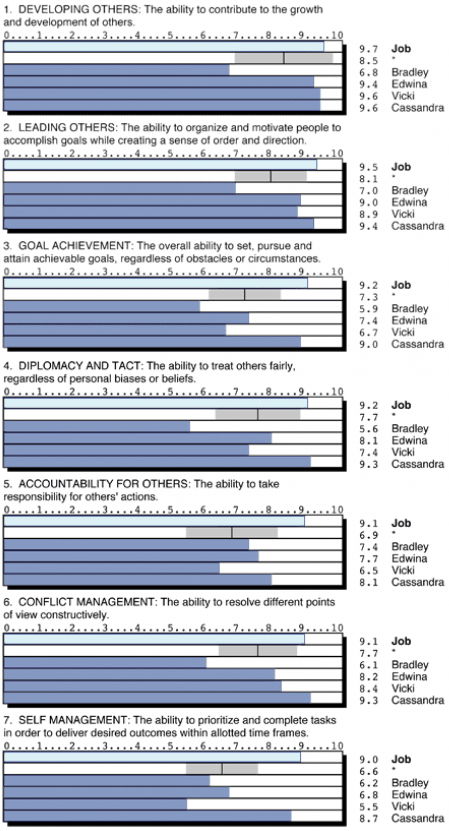
Analysis and Recommendation
The final part of the process involves debriefing the hiring manager/stakeholders on each of the candidates' results and how they did in comparison to the benchmark.
Topics:
Recruitment & Selection
Trevor O'Sullivan
General Manager. Since the early 2000s, Trevor has worked with thousands of Talent Management professionals to develop and apply assessment-based talent management solutions for selecting, developing and managing people. Trevor is an active member of the TTI Success Insights (TTISI) Global Advisory Council, contributes to TTISI product development and is a regular presenter at TTISI-R3. He is honoured to have received multiple Blue Diamond Awards and, more recently, the Bill Brooks Impact Award recognising his contributions to the TTISI global network.

/3%2c000%20Reasons%20Why%20TriMetrix%20Is%20My%20Assessment%20of%20Choice.png?width=374&name=3%2c000%20Reasons%20Why%20TriMetrix%20Is%20My%20Assessment%20of%20Choice.png)
/What%20Companies%20Need%20to%20Do%20to%20Attract%20Top%20Talent%20in%202019.png?width=374&name=What%20Companies%20Need%20to%20Do%20to%20Attract%20Top%20Talent%20in%202019.png)
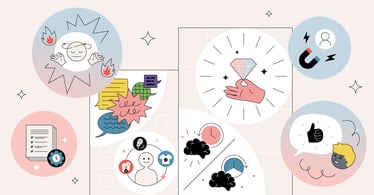
0 Comments